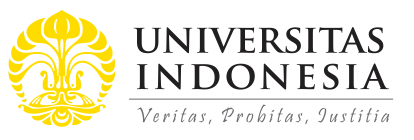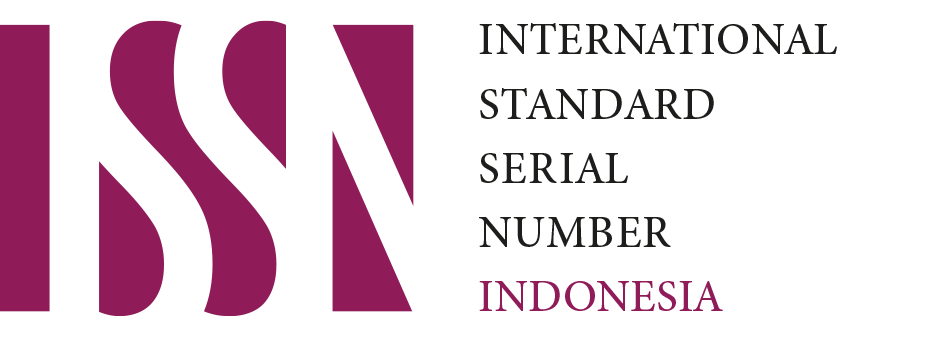Abstract
The economic prosperity of any nation relies on its banking sector, which serves as the linchpin of the economy. This paper investigates key bank-specific factors influencing the stability of Islamic banks in Malaysia and Indonesia from 2012 to 2021. Using panel data analysis, the study identifies the fixed effect model as the optimal approach. The subsequent fixed effect regression analysis highlights the significance of the cost-to-income ratio in determining financial stability for both Malaysian and In- donesian Islamic banks. Notably the study reveals that the non-performing loan ratio is the primary stability indicator in Malaysia, while Indonesian counterparts prioritize maintaining a robust capital adequacy ratio. The study recommends vigilant regulatory oversight of capital adequacy and prudent expense management to safeguard banks against instability, fostering sustained financial health and success.
References
Association of Islamic Banking Institutions Malaysia (AIBIM). (2024, February 3). Half of Malaysia’s Banking Assets to be Islamic. Retrieved from https://aibim.com/news/ half-malaysia-banking-assets-to-be-islamic
Abirami, K. (2018). Financial Soundness of Indian Banking Industry: Bankometer Analysis. International Journal of Applied Research, 4(3), 357–362.
Adem, M. (2022). Impact of Diversification on Bank Stability: Evidence from Emerging and Developing Countries. Discrete Dynamics in Nature and Society, 2022. https://doi. org/10.1155/2022/7200725
Ali, M., & Puah, C. H. (2019). The Internal Determinants of Bank Profitability and Stability: An Insight from the Banking Sector of Pakistan. Management Research Review, 42(1), 49–67. https://doi.org/10.1108/MRR- 04-2017-0103
Aruwa, S. A., & Naburgi, M. M. (2014). Impact of Capital Adequacy on Financial Performance of Quoted Deposit Money Banks in Nigeria. 4th International Conference of Faculty of Administration, 5(3), 248–253.
Atoi, N. V. (2019). Non-performing Loan and its Effects on Banking Stability: Evidence from National and International Licensed Banks in Nigeria. Central Bank of Nigeria Journal of Applied Statistics, 9(2), 43–74. Internet Archive.https://doi.org/10.33429/ cjas.09218.3/6
Baltagi, B. H., Bresson, G., & Pirotte, A. (2003). Fixed effects, random effects, or Hausman- Taylor?: A pretest estimator. Economics Letters, 79(3), 361–369. https://doi. org/10.1016/S0165-1765(03)00007-7
Bank Indonesia. (2022). What is Financial System Stability? Bank Indonesia. https://www.bi.go.id/en/fungsi-utama/stabilitas- sistem-keuangan/ikhtisar/Default.aspx
Bagntasarian, A., & Mamatzakis, E. (2019). Testing for the Underlying Dynamics of Bank Capital Buffer and Performance Nexus. Review of Quantitative Finance and Accounting, 52, 347-380. doi:10.1007/ s11156-018-0712-y
Banna, H., Hassan, M. K., Ahmad, R., & Alam, M. R. (2022). Islamic Banking Stability Amidst the COVID-19 Pandemic: The Role of Digital Financial Inclusion. International Journal of Islamic and Middle Eastern Finance and Management, 15(2), 310-330. doi:10.1108/IMEFM-08-2020-0389
Boyd, J. H., & Graham, S. L. (1986). Risk, Regulation, and Bank Holding Company Expansion Into Nonbanking. Quarterly Journal of Economics, 101(1), 141–163.
Calem, P., & Rob, R. (1999). The Impact of Capital-Based Regulation on Bank Risk- Taking. Journal of Financial Intermediation, 8(4), 317-352. doi: https://doi.org/10.1006/ jfin.1999.0276
Chand, S., Kumar, R., & Stauvermann, P. (2021). Determinants of Bank Stability in a Small Island Economy: A Study of Fiji. Accounting Research Journal, 34(1), 22-42. doi:10.1108/ARJ-06-2020-0140.
Christaria, F., & Kurnia, R. (2016). The Impact of Financial Ratios, Operational Efficiency and Non-Performing Loan Towards Commercial Bank Profitability. Accounting and Finance Review, 1(1), 43–50. https:// doi.org/10.35609/afr.2016.1.1(6)
Daoud, Y., & Kammoun, A. (2020). Financial Stability and Bank Capital: the Case of Islamic Banks. International Journal of Economics and Financial Issues, 10(5), 361– 369. https://doi.org/10.32479/ijefi.10147
Dwinanda, I. Z., & Sulistyowati, C. (2021). The Effect of Credit Risk and Liquidity Risk on Bank Stability. Jurnal Ilmu Ekonomi Terapan, 6(2), 255. https://doi.org/10.20473/ jiet.v6i2.31144
Ghassan, Hassan B., & Krichene, N. (2017). Financial Stability of Conventional and Islamic Banks: A Survey. MPRA Paper, No. 82372(August), 1–32. https://mpra.ub.uni- muenchen.de/82372/
Ghenimi, A., Chaibi, H., & Omri, M. A. B. (2017). The Effects of Liquidity Risk on Bank Stability: Evidence from the MENA Region. Journal of Financial Regulation and Compliance, 25(4), 444-460. doi:10.1108/ JFRC-03-2017-0029
Hausman, J.A. & Taylor, W.E. (1981). Panel Data and Unobservable Individual Effects. Econometrica, 49, 1377-1398.
Kamran, H.W., Omran, A., & Arshad, S.B.B.M. (2019). Risk Management, Capital Adequacy and Audit Quality for Financial Stability: Assessment from Commercial Banks of Pakistan. Asian Economic and Financial Review, 9(6), 654–664. https://doi. org/10.18488/journal.aefr.2019.96.654.664
Hasan, Zubair. (2023). Islamic Banking and Finance, Second Edition. Routledge
Hussain, S. (2014). The Assessment of Operational Efficiency of Commercial Banks in India Using Cost to Income Ratio Approach. Int. J. Manag. Bus. Res, 4(3), 225–234.
IMF. (2022). Financial Soundness Indicators: Analytical Aspects and Country Practices. Retrieved from https://www.imf.org/ external/pubs/nft/op/212/index.htm
Indonesia, B. (2022). What is Financial System Stability? Retrieved from 1
Ikpesu, F., & Oke, B. O. (2022). Capital adequacy, Asset Quality, and Banking Sector Performance. ŒCONOMICA, 18(5), 37-46.
Ketaren, E.V., & Haryanto, A.M. (2020). Pengaruh Kinerja Keuangan Terhadap Stabilitas Perbankan Yang Terdaftar di bursa Efek Indonesia. Jurnal Manajemen Bisnis Krisnadwipayana, 9(2019), 1–13.
Khan, F.R., Khan, M.N., & Urooge, S. (2020). Non-Performing Loan and Financial Stability of Banking Industry in Pakistan. International Review of Management and Business Research, 9(4), 347–356. https://doi.org/10.30543/9- 4(2020)-29
Kharabsheh, B., & Gharaibeh, O.K. (2022). Determinants of Banks’ Stability in Jordan.
Kurniawati, A., & Indriyani, S.N. (2022). Pengaruh Loan To Deposit Ratio, Net Interest Margin Dan Nonperforming Loan Terhadap Stabilitas Sistem Keuangan Perbankan Di Indonesia. Jurnal Manajemen Bisnis Krisnadwipayana, 10(1). https://doi. org/10.35137/jmbk.v10i1.676
Kusmayadi, D. (2018). Analysis of the Effect of Capital Adequacy Ratio, Loan to Deposit Ratio, Non-Performing Loan, Bopo, and Size on Return on Assets in Rural Banks in Indonesia. Saudi Journal of Business and Management Studies (SJBMS), 3(7), 786–795. https://doi.org/10.21276/ sjbms.2018.3.7.4
Laura, C., Liu, H., Federica, P., & Zhou, M. (2016). How Accurately can Z-Score Predict Bank Failure? Loughborough University, 0–45.
Lepetit, L., & Strobel, F. (2015). Bank Insolvency Risk and Z-Score Measures: A Refinement. SSRN Electronic Journal, 13, 214–224. https://doi.org/10.2139/ ssrn.1753735
Li, X., Tripe, D., & Malone, C.B. (2017). Measuring Bank Risk: An Exploration of Z-Score. SSRN Electronic Journal, January. https://doi.org/10.2139/ssrn.2823946
Merhbene, D.E. (2021). The Relationship between Non-Performing Loans, Banking System Stability, and Economic Activity: The Case of Tunisia. Graduate Institute of International and Development Studies, 1–19.
Murugiah. (2022). Southeast Asia’s Islamic Banking Market Set for 8% Growth, says S&P. [Press release]. Retrieved from https://www.theedgemarkets.com/source/ theedgemarkets.com
Ozili, P.K. (2019). Determinants of Banking Stability in Nigeria. Munich Personal RePEc Archive, 94092.
Pham, T.T., Dao, L., & Nguyen, V.C. (2021). The Determinants of Bank’s Stability: a System GMM Panel Analysis. Cogent Business & Management, 8(1), 1963390. do i:10.1080/23311975.2021.1963390
Rupeika-Apoga, R., Zaidi, S.H., Thalassinos, Y.E., & Thalassinos, E.I. (2018). Bank Stability: The Case of Nordic and Non- Nordic Banks in Latvia. International Journal of Economics and Business Administration, 6(2), 39–55. https://doi. org/10.35808/ijeba/156
Rupeika-Apoga, R., Romānova, I., & Grima, S. (2020). The determinants of bank’s stability: Evidence from Latvia, a small post-transition economy. In S. Grima, E. Özen, & H. Boz (Eds.), Contemporary issues in business economics and finance (Contemporary Studies in Economic and Financial Analysis, Vol. 104, pp. 235-253). Emerald Publishing Limited.
Setiawan, Budi; Puspitasari, Ratih; Manurung, Tarida Marlin Surya. (2021). “The Existence of Islamic Banking in Indonesia from Non-Muslim Perceptions.” ASEAN Marketing Journal, 7(2), 1-3. DOI: 10.1080/14697688.2023.2270495
Undang-Undang Nomor 4 tahun 2023 tentang Pengembangan dan Penguatan Sektor Keuangan (UU P2SK Number 4 of 2023).
Sang, N.M. (2021). Capital Adequacy Ratio and a Bank’s Financial Stability in Vietnam. Banks and Bank Systems, 16(4), 61–71. https://doi. org/10.21511/bbs.16(4).2021.06
Setiawan, A., Sudarto, & Widiastuti, E. (2019). The Influence of Credit Risk and Liquidity Risk on Bank Stability. International Conference on Rural Development and Entrepreneurship 2019: Enhancing Small Business and Rural Development Toward Industrial Revolution 4.0, 5(1), 1–9.
Widarjono, A. (2020). Stability of Islamic banks in Indonesia: Autoregressive Distributed Lag Approach. Jurnal Keuangan dan Perbankan, 24(1), 40-52. doi:10.26905/jkdp.v24i1.3932 Economies, 10(1), 1–16. https://doi.
Recommended Citation
Saddam, Siti Zaitun; Jaafar, Mohamad Nizam; Muhamat, Amirul Afif; Nizam, Nurien Syahirah Mohd; and Halim, Nurin Aqilah
(2024)
"Determinants of Islamic Banks’ Stability in Malaysia and Indonesia,"
Indonesian Capital Market Review: Vol. 16:
No.
1, Article 2.
DOI: 10.21002/icmr.v16i1.1193
Available at:
https://scholarhub.ui.ac.id/icmr/vol16/iss1/2












